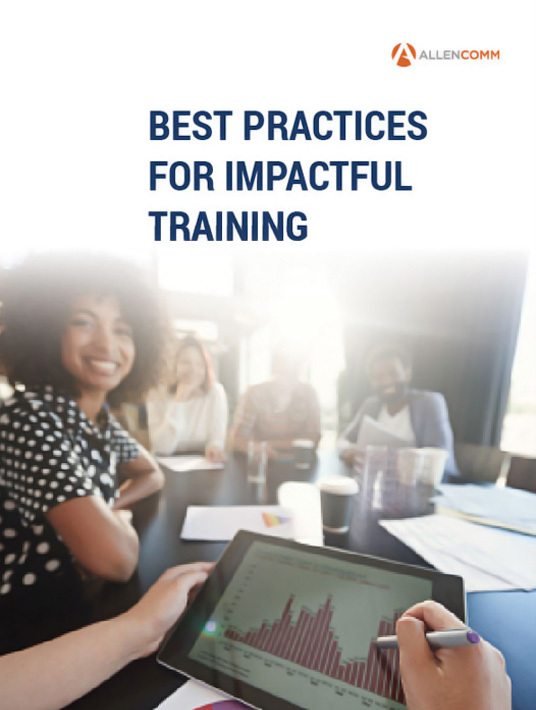Best Practices For Using Assessments In Training
In the field of training and development, assessments are rarely created with the end-user in mind. Typically, assessments are built into learning solutions to generate data for stakeholders or to make sure users have successfully learned their applicable content. While both of these purposes are indeed valuable, it’s possible to create assessments that provide useful learner data while functioning as effective learning tools for our users.

Prioritize Formative Assessment
One of the best ways to get the most out of our assessments is to make sure we brush up on our understanding of formative assessments and summative assessments. This distinction is a basic tenet of the educational process, but our particular industry offers some interesting nuances when considering how to create learner-centric assessments. While summative assessments will always have a place in learning, prioritizing formative assessment for web-based learning can provide opportunities for users to maintain their learning autonomy while the course assesses their aptitude and confidence in a given learning objective. Advances in interactive learning technology have redefined the way in which we can incorporate several creative and independent opportunities for learners to interact with their training program to assess their own progress. AllenComm has been at the forefront of incorporating interactive and immersive assessment activities into web-based training, and we’ve developed several effective activities for this process. We’ve found that interactive scenarios offer both our learners and our designers' vast amounts of creativity when it comes to the educational process. These scenarios provide our learners with the opportunity to measure their own progress against the progress of simulated employees in their own role or profession. Not only does this help them to gauge their own readiness, but it offers a safe space for them to potentially see negative repercussions without any real-life consequences.
Authenticity Is Key
When approaching assessments with the learner in mind, the question of authenticity should be at the top of our list. Devising assessments that are authentic to the learner in some way—professionally, personally, or philosophically—will help learners see the connection between their development and their ability to do their job. Additionally, authentic assessments will better prepare learners for situations that could potentially arise in their workplace or particular department while generating useful learner data for the training program’s stakeholders. Authentic assessments are typically born out of a solid foundation of potential learning outcomes. Once we have our instructional road map in front of us, we can decide how to make our assessments authentic to the learning outcomes and professional ideology that we want from our learners.
The Right Assessment For The Job
As creating and implementing assessments that are as beneficial to our learners as they are to our stakeholders is a tricky task, AllenComm has developed a needs analysis process to dig into the educational needs of our learners and how the right assessment can meet those needs. Our needs analysis process allows helps us figure out what an organization might need to work on so we can conceptualize and design the perfect learning outcomes and authentic assessments for each of our clients. Each step of the learning journey is important, and assessments are often left out of the planning process. With a solid understanding of where our learners want to go, we can develop assessments that help them along the way while providing everyone involved with the right information.
Next Steps
You'll next want to know how to measure the results of your training to see what kind of impact it has had on your learners. Regardless of type, industry, or budget, all training should carry a common thread—something about the status quo needs to change. These needs inform the training's overall goal and provide the basis for identifying results. The three most common impact goals are improving retention, reducing costs, and changing behavior. Many training initiatives combine two ore more of these objectives as part of their core goals. For more information on best practices to make an impact and to learn how to measure the results of your training, take a look at the eBook "Best Practices For Impactful Training". You'll discover ways to make the biggest difference for your learning strategy this year and beyond.








